Introduction
What Are Rabbits Classified As: Rabbits, those charming and often adorable creatures, have captured the fascination of humans for centuries. As members of the animal kingdom, they belong to a specific classification that helps us understand their place in the vast web of life on Earth. The process of classifying living organisms, known as taxonomy, allows scientists to categorize and study different species based on their evolutionary relationships and shared characteristics. Rabbits rodent, with their distinctive features and behaviors, find their niche within this taxonomic framework. In this exploration, we will delve into the classification of rabbits, uncovering the branches of the tree of life to which they belong and shedding light on their biological relationships with other organisms.
Rabbits, those charming and often adorable creatures, have captured the fascination of humans for centuries. As members of the animal kingdom, they belong to a specific classification that helps us understand their place in the vast web of life on Earth. The process of classifying living organisms, known as taxonomy, allows scientists to categorize and study different species based on their evolutionary relationships and shared characteristics. Rabbits, with their distinctive features and behaviors, find their niche within this taxonomic framework.
Taxonomically, rabbits belong to the order Lagomorpha, which sets them apart from rodents, despite their similar appearances. This order encompasses a variety of small to medium-sized mammals that share common traits, such as their dental structures and reproductive systems. Within Lagomorpha, the family Leporidae houses true rabbits, while the family Ochotonidae includes pikas, another group of lagomorphs.Rabbits exhibit a range of adaptations that suit their diverse habitats, which span continents from grasslands to forests. Their powerful hind limbs enable swift running and jumping, a crucial trait for escaping predators. Additionally, their distinctive set of teeth, featuring a combination of incisors and cheek teeth, is specialized for a herbivorous diet, primarily consisting of fibrous plant material.
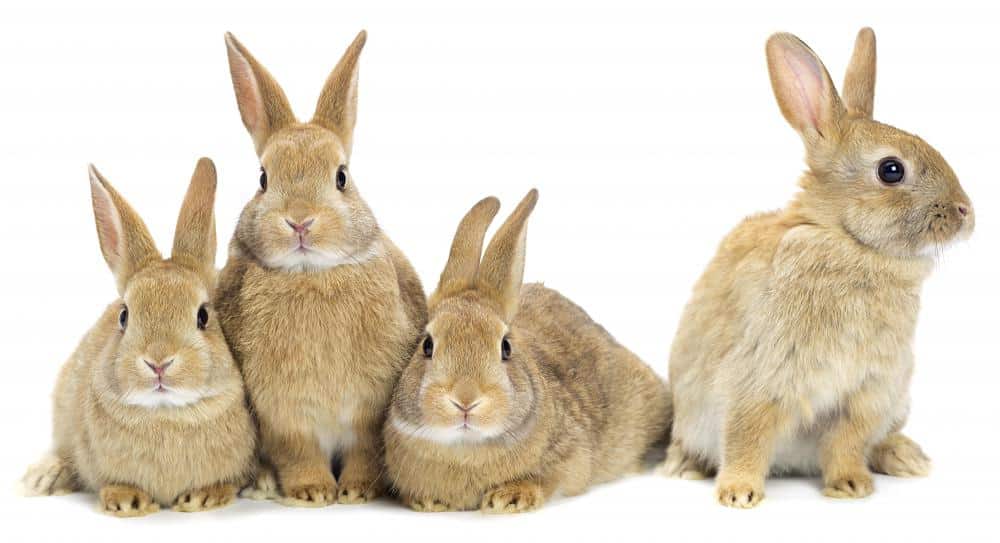
Is A Bunny A Mammal or a rodent?
Rabbits are members of the Leporidae family – one of two families (aside from Ochotonidae or the pika family) in the Lagomorpha order of mammals. History is partly to blame for the confusion between rodents and rabbits. Rabbits and rodents also share some superficial similarities.
Bunnies Are Mammals
Bunnies, scientifically known as rabbits, are unquestionably mammals. Being a mammal means they possess several defining characteristics that set them apart from other animal groups. These include giving birth to live young, having mammary glands to nurse their offspring, and having a higher metabolic rate that helps regulate their body temperature. Rabbits certainly adhere to these mammalian traits.
Rodents Are Different
On the other hand, rodents belong to a distinct order called Rodentia. This group includes animals like mice, rats, squirrels, and guinea pigs. While rodents and rabbits might appear somewhat similar due to their small size, incisor teeth, and gnawing habits, they have substantial differences in terms of their evolutionary history, dental structures, and other physiological features.
Key Differences
One of the most prominent differences lies in their teeth. Rodents are characterized by a pair of large, continuously growing incisor teeth in the upper and lower jaws, which they use for gnawing and chewing. In contrast, rabbits have a unique arrangement of teeth, with a combination of incisors and cheek teeth that are specialized for their herbivorous diet.
Taxonomic Classification
Rabbits belong to the order Lagomorpha, which is distinct from the order Rodentia. This separate classification reflects the evolutionary divergence of these two groups. While both rabbits and rodents are part of the larger group of gnawing mammals, they follow different evolutionary paths and have evolved distinct adaptations to their respective environments and lifestyles.
Are rabbits a rodent?
(Incidentally, the Rodentia does not include rabbits; rabbits differ from rodents in having an extra pair of incisors and in other skeletal features. Rabbits, hares, and a few other species make up the Lagomorpha. Shrews, moles and hedgehogs are also not rodents; they are classified in the Mammal order Eulipotyphla.)
Taxonomic Classification
Rabbits belong to the order Lagomorpha, a taxonomic group separate from the order Rodentia, which encompasses true rodents. While both groups are part of the larger class of mammals, they have distinct evolutionary histories and features that set them apart.
Dental Anatomy
One of the most significant differences between rabbits and rodents lies in their dental structures. Rodents are characterized by a pair of large, continuously growing incisors in the upper and lower jaws. These incisors are used for gnawing and chewing, and they have enamel only on the front surface. In contrast, rabbits possess four upper incisors and a specialized arrangement of teeth that includes cheek teeth. These teeth are adapted for grinding fibrous plant material, reflecting their herbivorous diet.
Digestive System
The digestive systems of rabbits and rodents also exhibit differences. Rabbits are known for their unique process of digesting cellulose-rich plant material. They engage in a process called hindgut fermentation, in which specialized bacteria break down complex plant compounds in the cecum, a part of the digestive tract. Rodents, on the other hand, lack this specialized adaptation and rely more on their foregut for digestion.
Evolutionary History
The divergence between rabbits and rodents can be traced back to their evolutionary history. While both groups share a common ancestor, they branched off into separate lineages and developed distinct anatomical and physiological features suited to their ecological niches.
Shared Traits and Misconceptions
It’s understandable why the misconception of rabbits as rodents exists. Both groups are small, have prominent incisors, and engage in gnawing behaviors. Additionally, their ecological roles can sometimes overlap, as they might inhabit similar environments. However, these shared traits are a result of convergent evolution, where different species develop similar characteristics in response to similar environmental pressures.
Is Rabbit a reptile or amphibian?
Turtle is generally classified into reptiles and Rabbit is generally classified into mammals but they don’t have any relation with Amphibians.
Rabbits: A Definitive Mammalian Identity
Rabbits fall squarely within the classification of mammals. Mammals share several defining characteristics that set them apart from reptiles and amphibians. These characteristics include giving birth to live young (with a few exceptions, like monotremes), having mammary glands to nurse their offspring with milk, and having a higher metabolic rate that helps regulate their body temperature. Rabbits conform to all these mammalian traits.
Reptiles: A Separate Group
Reptiles, on the other hand, are cold-blooded vertebrates that are characterized by scales or tough, protective outer coverings, and they usually lay eggs. They include animals like snakes, lizards, turtles, and crocodiles. Unlike rabbits, reptiles do not give birth to live young and lack mammary glands to provide milk for their offspring.
Amphibians: An Unrelated Category
Amphibians are another distinct category of animals, encompassing creatures like frogs, toads, salamanders, and newts. Amphibians typically have a life cycle that involves transitioning from aquatic larvae to terrestrial adults. They often have moist, permeable skin and lay eggs in water. Amphibians also lack the characteristics that define mammals, making them markedly different from rabbits.
Evolutionary and Anatomical Differences
The evolutionary paths of rabbits, reptiles, and amphibians have led to vastly different anatomical features and behaviors. For instance, rabbits possess specialized dentition adapted for a herbivorous diet, including both incisors and cheek teeth. This is a far cry from the dental structures of reptiles, which feature a different arrangement of teeth, and amphibians, which have quite varied oral structures.
Significance of Correct Classification
Understanding the correct classification of animals is vital for various reasons. It not only helps us appreciate the incredible diversity of life on Earth but also aids in scientific research, conservation efforts, and education. By recognizing the distinctions between mammals like rabbits, reptiles, and amphibians, we gain insight into the intricacies of evolutionary history and the adaptations that have allowed each group to thrive in their respective environments.
Is a rabbit considered an animal?
Rabbits are a prey species, they are the animals that other animals catch and eat. Therefore, rabbits naturally hide from things that scare them. Your rabbit’s environment must cater for this. You need to provide them with places in their enclosure to hide.
Defining Characteristics of Animals
Animals, as a broad category, share several defining characteristics that set them apart from other forms of life. These features include being multicellular, eukaryotic (having cells with a nucleus), heterotrophic (relying on external sources for nutrition), and lacking a cell wall. Additionally, animals generally possess the ability to move independently, at least during some stage of their life cycle.
Rabbits as Animals
Rabbits unequivocally meet all the criteria that define animals. They are multicellular organisms composed of eukaryotic cells. They require external sources of food for nutrition, and their digestive systems are specifically adapted to their herbivorous diet. Rabbits lack a cell wall, a feature that distinguishes them from plant cells, which possess a rigid cell wall made of cellulose. Moreover, rabbits are well-known for their agility and mobility, especially their ability to hop and run, showcasing their capacity for independent movement.
Biological Classification
From a taxonomic standpoint, rabbits are classified as mammals, a group of animals that give birth to live young and nurse their offspring with milk produced by mammary glands. This sets them apart from other classifications like reptiles, birds, and fish. Rabbits are part of the order Lagomorpha, which includes both rabbits and hares. This classification highlights their evolutionary relationship with other lagomorphs and their place within the broader animal kingdom.
Cultural and Ecological Significance
Rabbits, throughout history and across cultures, have held various symbolic and practical roles. They are often associated with fertility, agility, and charm. Moreover, they play essential roles in ecosystems as both prey and herbivores, shaping plant communities and contributing to the food chain.
Is rabbit and Rat same?
Rabbits are NOT rodents like mice, rats, and degus. They are in fact lagomorphs. Lagomorphs are more strictly herbivorous, and many rodents will eat meat and vegetables.
Physical Characteristics
Rabbits and rats have noticeable differences in their physical characteristics. Rabbits tend to be larger, with long ears and powerful hind limbs designed for hopping. Rats, on the other hand, are smaller and more slender, with pointed snouts and tails that can be as long as their bodies.
Dietary Habits
Dietary habits offer another contrast between these two species. Rabbits are herbivores, primarily consuming plant material such as grass, leaves, and other vegetation. Their specialized digestive systems are adapted to process fibrous plant matter. Rats, however, are omnivores, meaning they have a broader diet that includes both plant material and animal matter. They are known to consume a variety of foods, including grains, fruits, insects, and even small vertebrates.
Dental Structures
A significant difference between rabbits and rats lies in their dental structures. Rabbits have a unique set of teeth, including four upper incisors and specialized cheek teeth for grinding plant material. In contrast, rats have a pair of large, continuously growing incisors in the upper and lower jaws, which they use for gnawing and chewing.
Reproductive Behaviors
Rabbits and rats also exhibit distinct reproductive behaviors. Rabbits are known for their high reproductive rate, with females giving birth to multiple offspring in a single litter. They are also known to dig burrows to create safe environments for their young. Rats, on the other hand, are known for their adaptability and rapid breeding. They can produce numerous offspring in a short span of time, contributing to their ability to thrive in various environments.
What is a female rabbit called?
A female rabbit is called a doe. A male rabbit is called a buck. A baby rabbit is called a kit.
The Term “Doe”
The term “doe” is used to identify and distinguish female rabbits from their male counterparts, which are known as “bucks.” This nomenclature is not exclusive to rabbits; it’s a general term used for various other animals as well. In addition to rabbits, the term “doe” is often used to describe female deer, antelope, goats, and some other species.
Life of a Doe
Female rabbits, or does, play a crucial role in the reproductive cycle and the overall social dynamics of rabbit communities. Does have the unique ability to give birth to offspring, known as kits, after a gestation period of about 28 to 31 days, depending on the species. They exhibit maternal behaviors, such as digging burrows or creating nests to provide a safe and nurturing environment for their young.
Rabbit Breeding and Social Structure
In many rabbit species, including domesticated ones, does are often an integral part of breeding programs. Responsible breeding practices aim to maintain and improve specific traits within rabbit populations. Does contribute significantly to these programs by producing healthy offspring that adhere to certain breed standards.
Within the social structure of rabbit colonies or groups, does may also exhibit distinct behaviors and hierarchies. In some species, does might share communal responsibilities in rearing young or even in defending the group’s territory.
Cultural and Symbolic Significance
Beyond the biological context, female rabbits and their reproductive abilities have often held cultural significance. In various societies and folklore, rabbits have been associated with fertility and abundance due to their rapid reproductive rates.
Who eats rabbit meat?
In Europe, countries like France, Germany, and Poland routinely eat rabbit.
Cultural and Culinary Practices
Rabbit meat has been a part of human diets for centuries. Different cultures have integrated rabbit meat into their culinary practices in various ways. In many European countries, such as France, Italy, and Spain, rabbit dishes have become staples, often prepared in stews, roasts, or grilled preparations. Similarly, rabbit meat is appreciated in North African cuisine, where it’s used in tagines and other flavorful dishes.
Nutritional Aspects
Rabbit meat is known for its nutritional benefits. It is a lean source of protein that is lower in fat compared to meats like beef or pork. Rabbit meat is also rich in essential nutrients like vitamins B12 and B6, phosphorus, and selenium. This makes it a favorable choice for those seeking a protein-rich diet with reduced fat content.
Ethical and Environmental Considerations
Rabbit meat has gained attention as a more sustainable and ethically sound protein source compared to larger livestock. Rabbits have a smaller ecological footprint, require less space for raising, and reproduce rapidly, making them a potential solution to some of the environmental challenges associated with traditional meat production.
Traditional and Regional Preferences
In some cultures, rabbit meat is associated with certain holidays or occasions. For example, rabbit dishes are popular during Easter in some countries due to the symbolic connection between rabbits and fertility. In other regions, rabbit meat might be consumed for practical reasons, such as its availability and affordability.
Challenges and Taboos
Despite its nutritional value and culinary potential, rabbit meat faces certain challenges. In some cultures, rabbits are seen as beloved pets rather than food sources, leading to ethical concerns about their consumption. Additionally, cultural taboos and personal preferences can affect whether rabbit meat is included in people’s diets.
Rabbit Meat Today
Today, rabbit meat is available in various markets, both in its traditional regions of consumption and in places where it might not be as deeply ingrained in culinary practices. It’s often sought after by adventurous eaters, those interested in trying new flavors, and those who appreciate its nutritional profile.
Are rabbits friendly?
Rabbits are very loving, social animals, which means they not only love to spend time with their humans – they require it. Without human interaction, rabbits can get bored, even to the point of becoming lonely and depressed.
Personality Variability
Like humans and other animals, rabbits display a range of personalities. Some rabbits are naturally more outgoing and affectionate, while others might be shyer or more reserved. Factors such as genetics, early experiences, and the quality of care they receive can contribute to their individual personalities.
Social Animals
Rabbits are social animals that often live in groups or colonies in the wild. This social nature can translate to their interactions with humans and other rabbits when they are kept as pets. However, it’s important to note that not all rabbits are equally social, and some might need more time and patience to build trust and form bonds.
Building Trust
For rabbits to exhibit friendliness, trust is paramount. This trust-building process can take time, especially if a rabbit has had negative experiences in the past. It’s essential to approach rabbits with gentleness and respect, allowing them to become familiar with your presence at their own pace.
Positive Interaction
Positive interactions with rabbits involve avoiding sudden movements, loud noises, and other stressors. Offering them treats, spending time near them, and speaking in soothing tones can help establish a sense of security and comfort. Gradually, rabbits might become more curious and open to interaction.
Bonding and Companionship
Rabbits that are kept as pairs or small groups tend to be more socially fulfilled. They can provide companionship for each other and engage in mutual grooming, playing, and resting together. However, not all rabbits get along equally well, and proper introductions and monitoring are crucial when pairing rabbits.
Tailored to Individual Rabbits
It’s important to recognize that friendliness and sociability vary from rabbit to rabbit. Some rabbits might become comfortable with handling and enjoy cuddling, while others might prefer proximity without direct physical contact. It’s crucial to respect each rabbit’s boundaries and preferences.
Health and Happiness
A friendly and well-socialized rabbit is often a healthy and happy one. Positive interactions and mental stimulation contribute to their overall well-being. Regular exercise, a proper diet, and a safe environment also play significant roles in ensuring a rabbit’s happiness.
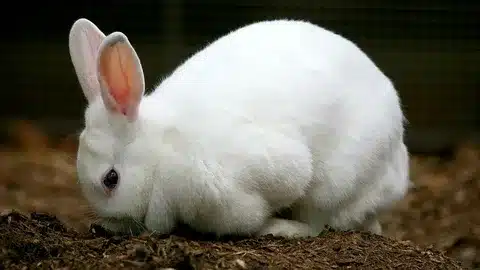
Conclusion
The classification of rabbits provides us with a deeper understanding of these captivating creatures and their place in the grand tapestry of life. Through the lens of taxonomy, we’ve uncovered that rabbits are part of the order Lagomorpha, a group that distinguishes them from rodents due to shared anatomical and reproductive characteristics. Their family, Leporidae, encompasses the true rabbits, highlighting their unique adaptations and behaviors that have evolved over time.
This classification not only aids scientists in organizing the immense diversity of life on Earth but also offers insights into the ecological roles rabbits play in various ecosystems. From their distinctive dentition designed for herbivory to their agile movements adapted for evading predators, rabbits showcase a remarkable suite of traits that have evolved through the forces of natural selection.
Beyond their biological significance, rabbits have captured human hearts and imagination, becoming symbolic of fertility, agility, and charm in cultures worldwide. As we continue to uncover the intricacies of the natural world, understanding how rabbits are classified allows us to appreciate the interconnectedness of all living beings and the remarkable adaptations that have allowed them to thrive across diverse environments.

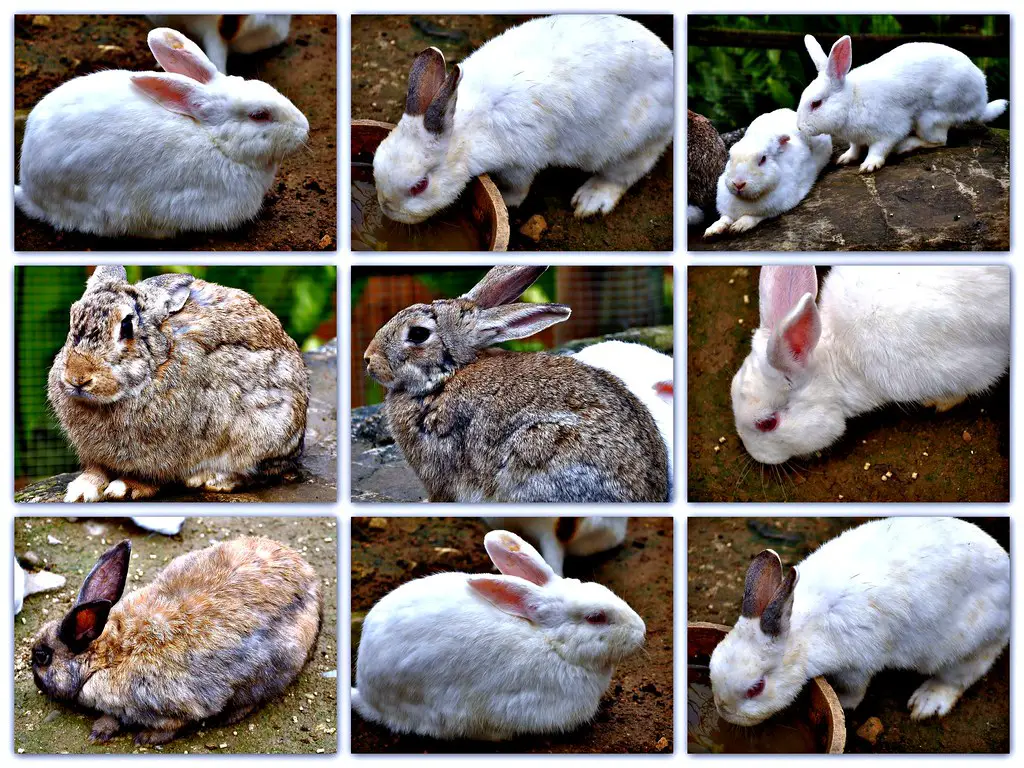
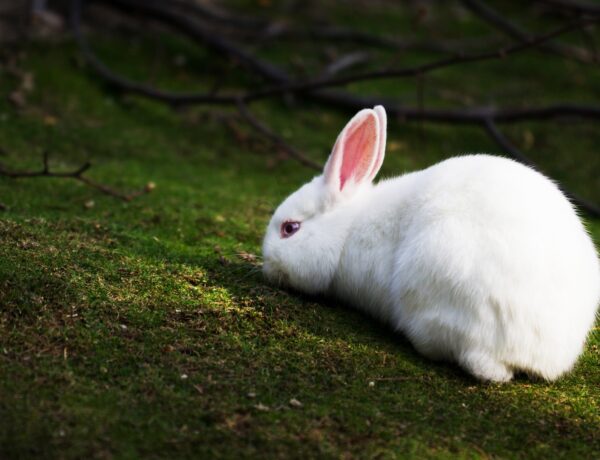
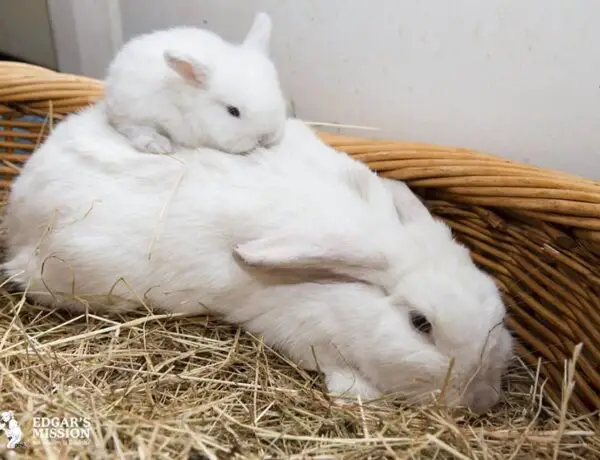
No Comments